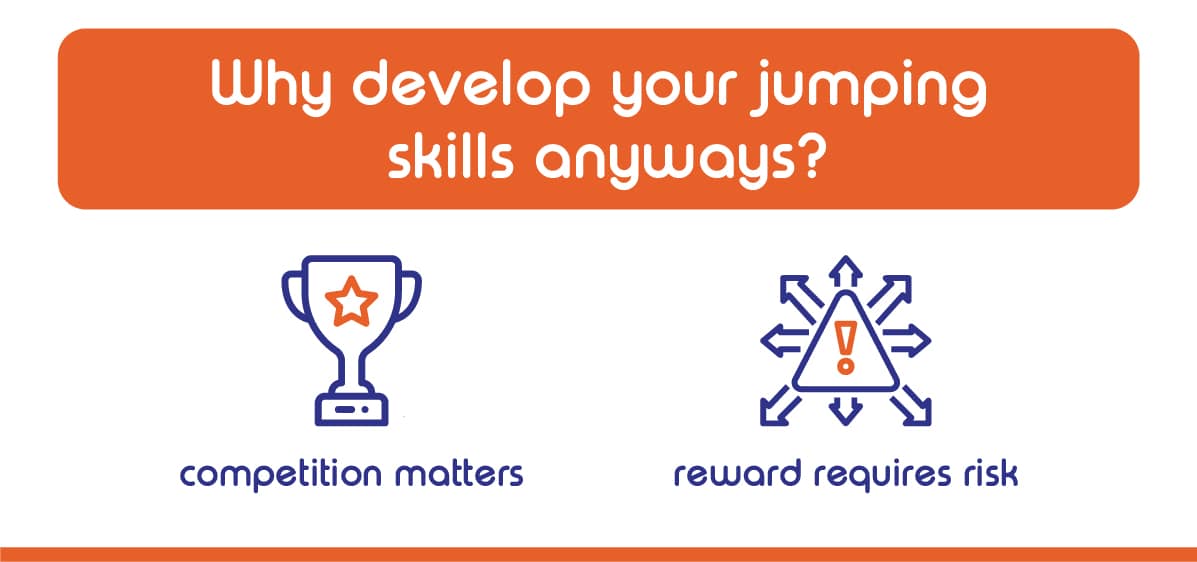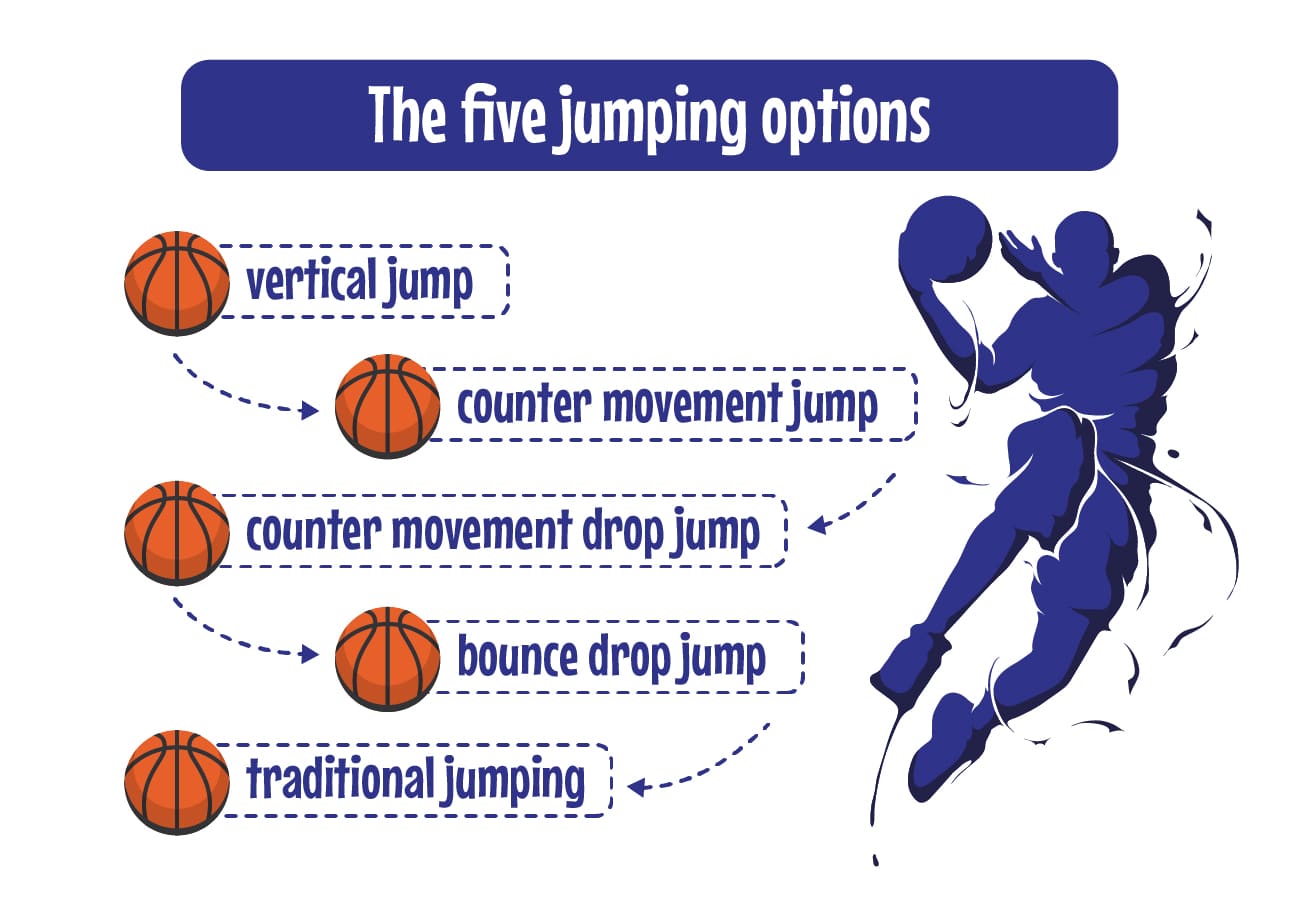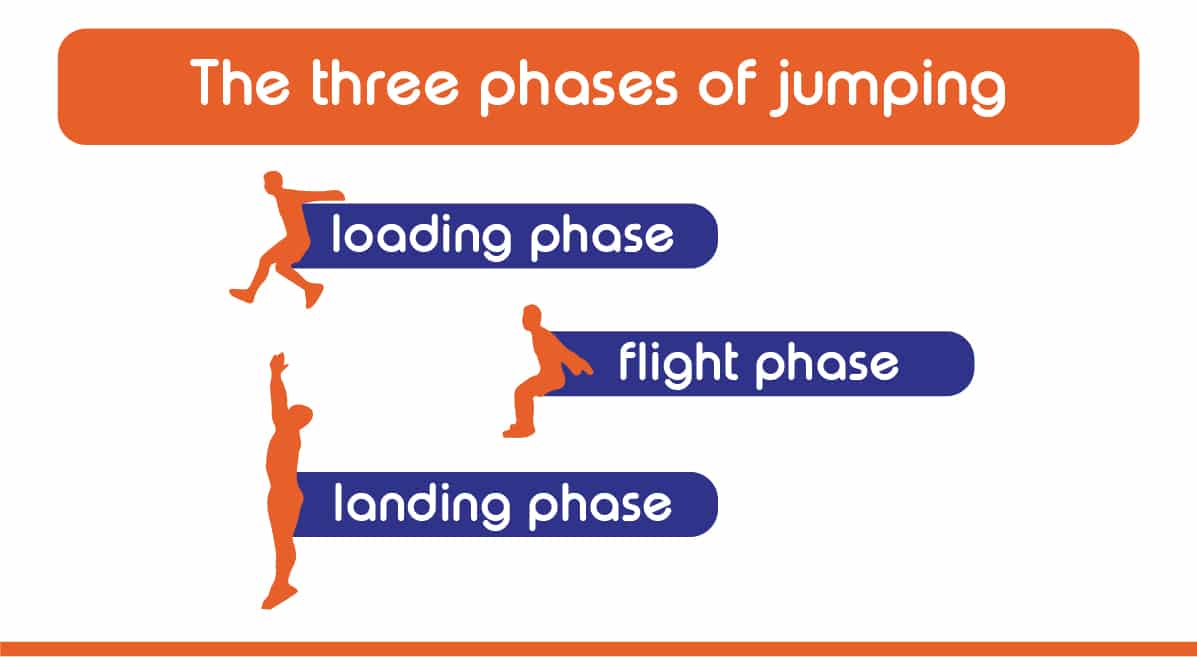
When you make the conscious decision to jump, you are preparing your body to apply varying levels of force against a substrate - in the context of this blog that will normally be a court or track surface.
When you apply that force against a court or track surface, you would have also generated a reactive force. The byproduct of that is that your body will subsequently be propelled in the opposite direction to the court or track surface. When you examine the nuts and bolts, that is in essence what it means to Jump.
It is worth noting that while humans will only ever achieve meaningful results Jumping Off A Solid Surface, there are many animals capable of Jumping Off Liquid Surfaces.
The point here is that Jumping Remains A Skill that needs to be developed - even though different sets of living beings will have some genetic advantages on different surfaces.
Some animals have acquired the skill level required to leap off a pond or river and humans also need to harness the skills required to Jump Properly off a track or court.
Why Must We Develop The Art Of Jumping?
Well, the good news is that you do not actually NEED to build your jumping skills anymore. The state of 21st Century living dictates that we no longer have to hunt down prey for sustenance.
Casually walking into a supermarket store does the trick these days - so jumping is no longer a life or death matter, but I digress.

Competition Matters
You Train Your Vertical Jump because you want to jump higher than all of your competitors, especially when you are competing on a basketball or volleyball court - where the competitive environment is more conducive for those who are naturally stronger and taller.
To Mitigate Risks That Come With Jumping
While our bodies are built to do it, jumping is not something that actually comes naturally to humans. If you are inexperienced and untrained, there is an inherent risk that comes with taking off into the air and then landing. .
five Jumping Methods:

1- Vertical Jump (VJ)
In the simplest context, the vertical jump is when every part of your body loses contact with the ground, once you have performed the act of leaping upwards into the air. The explosive power that you generate when you take off will determine how high or far into the air you jump.
There are essentially two types of vertical jump. The first is the standing vertical jump and the second is the running vertical jump. The vertical jump is not just about leaping into the air though.
It is also about testing your lower limb functionality and determining how much power your body is actually able to produce. That would be something that refers to a Vertical Jump Test, which also reveals how high your vertical is.
Elsewhere on these pages, you can learn more on How To Test Your Vertical. That vertical jump test is a function of all the main sports that require jumping. They include basketball, volleyball, American football, association football, rugby union, rugby league, Australian rules football and netball.
2- Counter-Movement Jump (CMJ)
We will start this segment by being a little scientific. When you try to jump, the simplicity of your body’s movement counts for a considerable amount. The CMJ is the simplest of all the jumping techniques that you can execute and the most likely to produce a solid vertical jump in basketball and volleyball.
A core principle of the CMJ is, in order to propel yourself upwards you first need to push your body’s mass center downwards. The best way to explain this simply is that you basically need to squat before you jump.
Once your body’s mass center has reached its lowest point, you will then be best placed to push your body in an upwards direction and generate the force required to propel yourself into the air.
A critical component to this is the contraction and subsequent expansion of all the muscle groups that will help generate the explosive power you need to jump. This is why the development of those muscles is so important during all of the relevant Jump Training regimens. There is more about that towards the end of this blog.
3- Counter-Movement Drop Jump (CDJ)
Both the Bounce Drop Jump (directly below) and the Counter-Movement Drop Jump are most associated with training regimens that seek to enhance the height of your vertical jump.
That is not to say they cannot be implemented in a competitive environment but the jury remains out on whether they add any value under those circumstances. The value with both jump methods when training to jump higher is widely acknowledged though, which means they are actually useful for all activities that require jumping - albeit indirectly.
An important note is that both the BDJ and CDJ incorporate the CMJ, albeit to varying degrees.
The CDJ involves you coming down from an elevated height. Once you land on the surface, the onus will then be on you to try “explode” upwards as high as you can.
Upon that initial landing, the key will be to flex the knee and hip joints as much as possible, with the view to generating more explosive power when you jump.
Taking into account the basic principles of the CMJ, the idea behind this is that in pushing as hard as you can downwards, you will produce an even greater elastic reaction on your way up.
Again, the jury is out on whether it can actually be as simple as that.
4- Bounce Drop Jump (BDJ)
So, we have already tapped on this briefly directly above. The BDJ is different in that it is a much faster movement than the CDJ. In essence there is more of a bounce than an actual drop to the surface before exploding upwards.
The Bounce Drop Jump is particularly useful in sports like American football, Australian rules football, association football rugby union.
So, you are not coming down to the surface from as high as you would with the CDJ.
Try to think of this as a slingshot. With the CDJ the mechanical loading of that “slingshot” (your body), before catapulting the projectile (also your body) into the air, is a lot longer and the force and power generated from this before jumping at the very least looks far greater.
However, there is overwhelming sentiment among the scientists that the heights generated from the BDJ are actually more pronounced or of greater significance. Sometimes bigger is not necessarily better.
5- Traditional Jumping
The generally accepted rule here is that this is when you take off from the surface with two feet and subsequently land on the same surface with two feet. This type of jumping is very common in sports codes like volleyball and netball, where there is no run-up to help generate speed and explosive power before jumping.
Jumping off and landing on two feet is also very common in gymnastics, where there are actually several disciplines. In gymnastics you are actually judged on your capacity to land on both feet, more so than your capacity to leap into the air.
That is a glaring reminder to us all that the manner in which you land is just as important as the manner in which you take off. It is probably more important than the height recorded when you do jump.
Basic Technique To Jump Properly
The vertical jump, more than anything else, requires a certain level of coordination between the different muscle groups in the body. What you manage to achieve when jumping is directly related to the movement pattern of your body and the actions taken by the different muscle groups in your body.
A term we have come to abuse on these pages is something called Explosive Power, which is a requirement when jumping - in any sphere of life really. Always in the deep recesses of your mind should be the mantra that you can only make a movement in one direction by initiating a movement in the opposite direction.
If you are in a standing position, the natural movement would then be downwards. As a result, the mass center of your body is then accelerated downwards. It is a quick movement and should really take place without you putting too much thought into it.
Another phrase we bandy about with reckless abandon on these pages is something called Muscle Memory. There are Plyometrics training techniques available to assist with the development of that Muscle Memory.
When that mass center moves downwards, there will be a flex in the joints below your waist, including the hip joint.
To generate the explosive power that you need, your body’s mass center will then accelerate in the opposite direction - from down to up. Depending on how much flex you get in your joints and leg muscles, this should feel like an elastic reaction.
The Counter-Movement Jump, which we discussed in some detail above is the most likely method to produce outstanding results for those wishing to achieve a vertical jump or any kind.
The Three Jump Phases
There are essentially three stages in the jumping motion.

1- Loading Phase
We won’t go into this in great detail here but you will figure out, through most jump training routines, that you will almost always be balanced on the balls of your feet during the Loading Phase of your jump.
You should always be in an athletic position during this phase and that is to say that your knees will be slightly bent. The amount of explosive you are hoping to generate for the jump will determine just how much your knees and hips are flexed during the loading phase. That is essentially what the loading phase is though. This is where you are preparing your body as best you can for the jump.
2- Flight Phase
This is where you picture Michael Jordan speaking to Bugs Bunny, with “I Believe I Can Fly” blasting in the background. They just don’t make movies like they used to.
But I digress. The Flight Phase of a jump is when you are airborne, possibly reaching out to the stars. The height at which you fly is determined by how much power you generated during the loading phase.3- Landing Phase
The Landing Phase of a jump is when either your one foot or both feet touch the ground again.
The success of the landing is normally determined by the injury that you incur once the jump has been completed. That ultimately hinges on the overall quality of the jump though. The basic mantra should be “No Injury Means Good Jump”.
Your body, through the knees, ankles and hip is already designed to absorb a considerable amount of the shock when landing after a jump.
However, the quality of your footwear can also have a significant impact on how much of that shock is absorbed. We always advise that you should wear shoes with adequate padding when attempting to jump.
How To Increase Your Jump
If you want to increase your jump in a sport like volleyball, you need to place emphasis on jump training that involves squatting or a full countermovement. Most of those exercises teach you to produce explosive power from a standing position.
If you want to increase your jump in a sport like basketball, you need to place emphasis on jump training that encourages the full use of the arms and taking off from the balls of your feet, as most of the jumping in basketball will be from a walking and running position.
If you want to increase your jump in a sport like high jump, you want to place tremendous emphasis on jump training that encourages speed, better technique and rhythm.
Conclusion
If you are struggling to jump well and improve your results, one of five things could be happening. The good news is that there are ways to remedy all of the problems associated with these things, granted you are strong and healthy.
There is the distinct possibility that you are not generating enough Flex At The Hips.
There is also the possibility that you are Not Generating Enough Power At The Jump Take Off.
Sometimes you need to find a way to Generate More Explosive Power while loading for your jump.
You will also be able to tell when you are Struggling For Stability At The Joints, like the ankles, knees and hips. How many legs you have opted to take off from often determines the stability or lack thereof in a jump. One leg is obviously less stable than two.
Finally, you are probably Landing Like An Airplane With No Pilot. That is a serious problem, as it exposes you to endless possibilities for injury.
Of all the jumping problems that you have, this is the one you will need to address first, otherwise you might not find yourself jumping for too much longer.
Hey, I’m Aleksandar and I am a Basketball freak! That is why I decided to create this blog. Teaching people How to dunk a basketball and How to Jump Higher in this sport or other related sports that require vertical jumping, is my specialty. If that’s your aim, then you have come to the right place.
